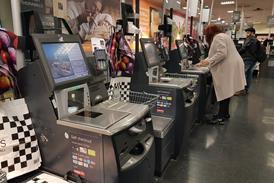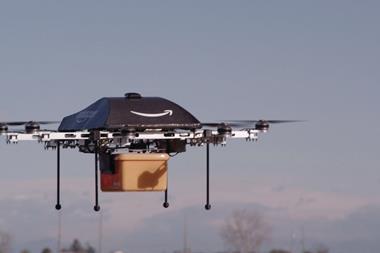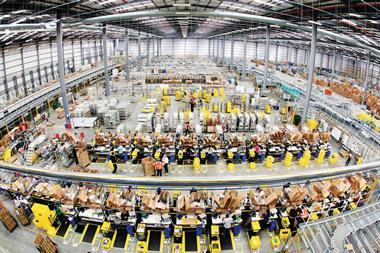Amazon unveiled its first smartphone, Fire, yesterday which allows users to see images in 3D and buy items they see.
Amazon Fire, which goes on sale in the US on July 25, uses Firefly technology, which can scan real-life products and enables users to buy them instantly on its website.
It identifies printed text on signs, posters and business cards and users can then buy the item, make a call or save the details instantly.
The technology also recognises movie and TV episodes and uses IMDb to show actors, plot synopses and related content and can add titles to a watch list or download.
Amazon Fire has also adopted Dynamic Perspective technology that uses a new sensor system that responds to how users hold, view and move the phone. Amazon claimed the phone enabled a “more immersive experience”.
It enables one-handed gestures such as auto-scroll, where users can read a long web page without having to touch the screen, and tilt, which for example in Amazon Music, shows song lyrics.
The sensor system also makes it easier for the user to access information from apps. On the new Amazon Shopping app for Fire, users can instantly see close-up and back views of a dress, and in games, the phone can take on the character’s viewpoint and can move their head to look around corners.
Amazon founder and chief executive Jeff Bezos said: “Fire Phone puts everything you love about Amazon in the palm of your hand – instant access to Amazon’s vast content ecosystem and exclusive features like the Mayday button, ASAP, Second Screen, X-Ray, free unlimited photo storage, and more.”
Amazon Fire also includes:
- Mayday button, which connects users to a live screen with an Amazon expert to give advice, which is available on 3G, 4G and Wi-Fi.
- Second Screen, which lets users show TV shows and movies from Fire Phone onto their Fire TV, PlayStation or any other Miracast-enabled device.
- Free unlimited cloud storage of photos taken with Fire.
Expert viewpoint
There are two key features that make the Amazon Fire an interesting proposition. First was the introduction of 3D technology which came as no real surprise given the speculation. Four front-facing cameras track the users head movement in relation to the screen to create what Amazon is calling ‘Dynamic Perspective.’ The use of Dynamic Perspective within apps has the potential to create a more immersive experience for consumers. Following that, if implemented well, brands will find that consumers are having more valuable interactions with their content.
Second, Bezos unveiled ‘Firefly’, a technology that has the ability to recognise both real world objects and digital content. Ultimately, Firefly exists to benefit Amazon. With the ability to record previous scans, the process of purchasing from Amazon has just taken on a whole new dimension. Firefly can recognise over 70 million products, including household items, books and DVDs.
What impact will this have for retailers? If we can now scan a DVD in-store, and find that it’s cheaper on Amazon, the impact could be detrimental for bricks-and-mortar stores. Considering this combined with Amazon Prime, shoppers can have the item at the best available price on their door step the very next day, free of delivery charge. This takes concerns about showrooming to the next level and will be an interesting challenge for bricks-and-mortar retailers.
- Maani Safa (@safatopia), is vice president of innovation and creative at mobile specialist Somo











![Ollie Pryor[46]](https://d53bpfpeyyyn7.cloudfront.net/Pictures/274x183/1/7/1/3119171_olliepryor46_336332_crop.jpg)
















No comments yet